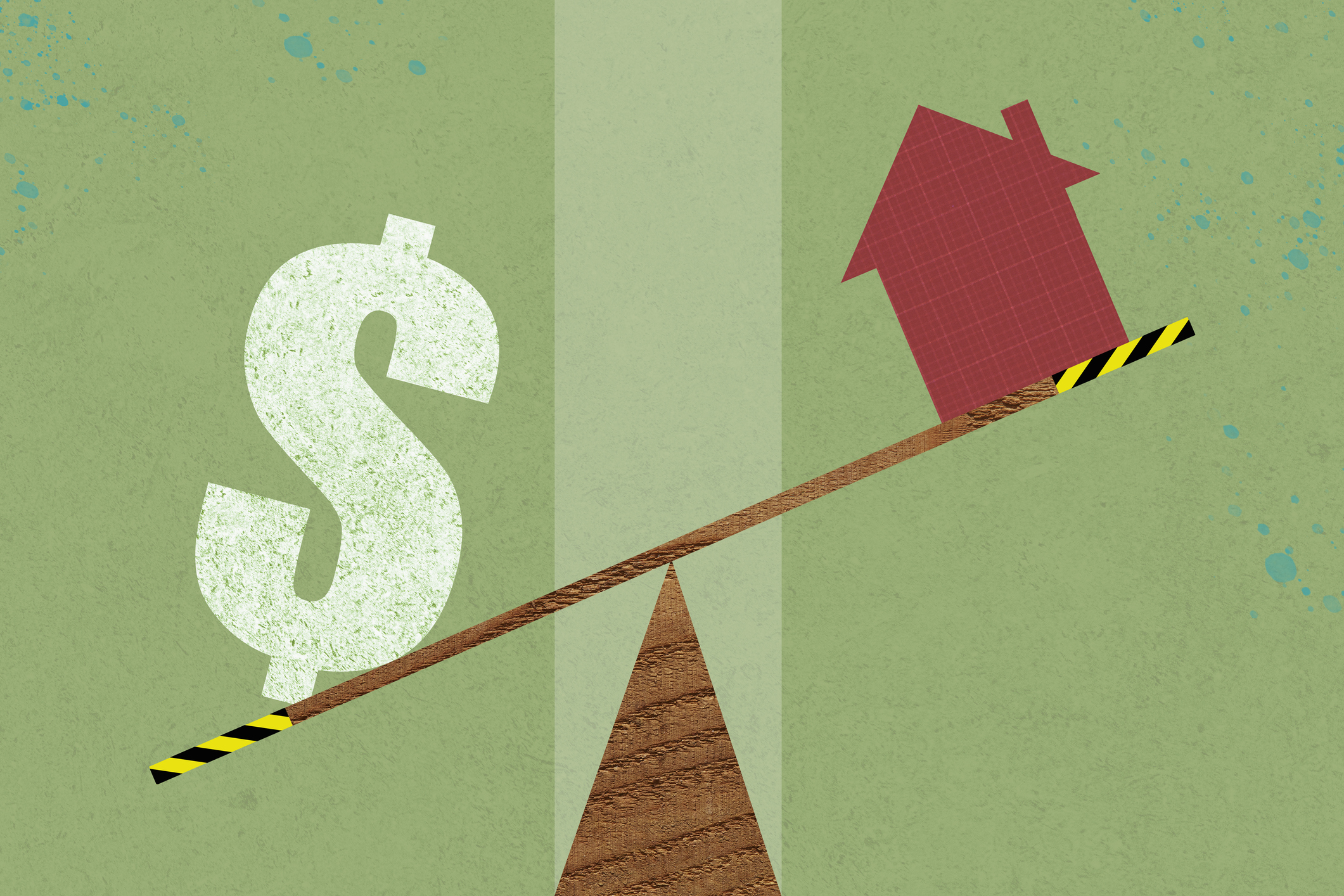Real Estate Bridge Funds: An Expert Guide to Investing in a Volatile Market
Investors looking for passive income are buying into these funds, which offer capital to borrowers for short-term financing.


In volatile markets, it's often the creative investors — not just the conservative ones — who stay ahead. Real estate is no exception.
While many investors are sitting on the sidelines waiting for clarity, others are gaining exposure through lesser-known vehicles, such as bridge funds — investment strategies that lend short-term capital to real estate projects and generate potential returns through interest income and fees.
What are bridge funds?
Bridge funds pool investor capital to provide short-term loans — commonly known as bridge loans — to real estate operators and developers. These loans typically finance transitional properties or time-sensitive acquisitions before the borrower secures permanent financing.
From just $107.88 $24.99 for Kiplinger Personal Finance
Become a smarter, better informed investor. Subscribe from just $107.88 $24.99, plus get up to 4 Special Issues

Sign up for Kiplinger’s Free Newsletters
Profit and prosper with the best of expert advice on investing, taxes, retirement, personal finance and more - straight to your e-mail.
Profit and prosper with the best of expert advice - straight to your e-mail.
The Kiplinger Building Wealth program handpicks financial advisers and business owners from around the world to share retirement, estate planning and tax strategies to preserve and grow your wealth. These experts, who never pay for inclusion on the site, include professional wealth managers, fiduciary financial planners, CPAs and lawyers. Most of them have certifications including CFP®, ChFC®, IAR, AIF®, CDFA® and more, and their stellar records can be checked through the SEC or FINRA.
While bridge loans have long been a tool for developers, what's less widely known is that real estate investors can also participate in this space through professionally managed funds.
These funds issue loans backed by real estate collateral, and potentially earn interest, origination fees and other upside. Because most bridge funds are offered through private placements, participation is generally limited to accredited investors.
To qualify as accredited, an individual must meet specific income or net worth thresholds, such as having a net worth over $1 million (excluding a primary residence) or annual income exceeding $200,000 individually or $300,000 with a spouse.
How bridge funds work
Bridge funds serve two key groups:
- Borrowers. Real estate sponsors often need fast, flexible capital — whether they’re acquiring a property, making improvements or bridging to permanent financing. With banks tightening lending standards, these short-term loans help close deals on tight timelines.
- Investors. Instead of buying property yourself, you can pool money with others to fund these short-term loans. You’re not managing tenants or overseeing renovations. You’re stepping in when capital is needed most — and potentially earning income for providing that speed and flexibility.
The rise of bridge funds for investors
Bridge financing has become especially relevant in today’s real estate environment.
Interest rates are high, traditional financing is slower and many borrowers face tighter capital constraints. This has opened the door for private bridge lenders — and the investors who fund them.
For investors, bridge fund investments may offer:
- Passive income. Consistent income from loan interest and fees
- Shorter hold periods. Shorter durations than typical real estate investments
- Default protection. Collateralized by real estate assets pledged to secure the loan
For investors, this means the potential to earn attractive risk-adjusted returns while sitting higher in the capital stack than an equity investor.
In many cases, the loans are collateralized by the property itself, and borrowers are incentivized to repay quickly to transition to longer-term, lower-cost financing.
What investors should know
Bridge funds aren't magic. Like any investment, they come with risk, especially if the fund is poorly managed or if deals underperform.
Looking for expert tips to grow and preserve your wealth? Sign up for Building Wealth, our free, twice-weekly newsletter.
Loan defaults, delays in refinancing and valuation mismatches can all affect returns.
That’s why due diligence is essential. Investors should closely evaluate:
- Experience. The fund manager’s experience and underwriting track record
- Strategies. Diversification strategy (by asset type, geography and borrower)
- Structure. The fund’s liquidity terms and fee structure
An opportunity for the right investor
Bridge funds aren't just about plugging gaps, they're about seizing opportunities. Real estate sponsors use bridge loans to act quickly and reposition assets, and investors help power that flexibility without taking on the full risk of owning property.
In today’s uncertain equity markets, bridge lending can offer a creative, income-generating and countercyclical way to stay active in real estate — while others wait on the sidelines.
Related Content
- The Future of 1031 Exchanges Under Trump Looks Bright
- Why Canadian Snowbirds Are Ditching Their US Homes
- Will 2025 Be a Good Year to Sell Your House?
- Capital Gains Tax on Real Estate and Home Sales
- Eight Signs You Might Be Ready to Start Investing in Real Estate
Profit and prosper with the best of Kiplinger's advice on investing, taxes, retirement, personal finance and much more. Delivered daily. Enter your email in the box and click Sign Me Up.

Edward Fernandez is President and Chief Executive Officer of 1031 Crowdfunding. With three-year revenue growth of 482%, 1031 Crowdfunding received ranking No. 1348 among America’s Fastest-Growing Private Companies on the Inc. 5000 list. Mr. Fernandez holds FINRA Series 6, 7, 24, and 63 licenses and is a Forbes Business Council Member. He has over 20 years of inside and outside sales experience and is personally involved in raising over $800 million of equity from individual and institutional investors through private and public real estate offerings. He is highly skilled in the simplification of highly complex real estate strategies and sophisticated investments and is regularly featured on Forbes, Inc., and the TD Ameritrade Network.
-
 Crypto Trends to Watch in 2026
Crypto Trends to Watch in 2026Cryptocurrency is still less than 20 years old, but it remains a fast-moving (and also maturing) market. Here are the crypto trends to watch for in 2026.
-
 Original Medicare vs Medicare Advantage Quiz: Which is Right for You?
Original Medicare vs Medicare Advantage Quiz: Which is Right for You?Quiz Take this quick quiz to discover your "Medicare Personality Type" and learn whether you are a Traditionalist, or a Bundler.
-
 Ask the Editor: Capital Gains and Tax Planning
Ask the Editor: Capital Gains and Tax PlanningAsk the Editor In this week's Ask the Editor Q&A, Joy Taylor answers questions on capital gains tax rates and end-of-year tax planning
-
 Crypto Trends to Watch in 2026
Crypto Trends to Watch in 2026Cryptocurrency is still less than 20 years old, but it remains a fast-moving (and also maturing) market. Here are the crypto trends to watch for in 2026.
-
 Time Is Running Out to Make the Best Moves to Save on Your 2025 Taxes
Time Is Running Out to Make the Best Moves to Save on Your 2025 TaxesDon't wait until January — investors, including those with a high net worth, can snag big tax savings for 2025 (and 2026) with these strategies.
-
 I'm an Insurance Pro: If You Do One Boring Task Before the End of the Year, Make It This One (It Could Save You Thousands)
I'm an Insurance Pro: If You Do One Boring Task Before the End of the Year, Make It This One (It Could Save You Thousands)Who wants to check insurance policies when there's fun to be had? Still, making sure everything is up to date (coverage and deductibles) can save you a ton.
-
 4 Smart Ways Retirees Can Give More to Charity, From a Financial Adviser
4 Smart Ways Retirees Can Give More to Charity, From a Financial AdviserFor retirees, tax efficiency and charitable giving should go hand in hand. After all, why not maximize your gifts and minimize the amount that goes to the IRS?
-
 Small Caps Hit a New High on Rate-Cut Hope: Stock Market Today
Small Caps Hit a New High on Rate-Cut Hope: Stock Market TodayOdds for a December rate cut remain high after the latest batch of jobs data, which helped the Russell 2000 outperform today.
-
 Should You Tap Your Home Equity Before 2026?
Should You Tap Your Home Equity Before 2026?As borrowing rates and tax law shifts converge, here's what homeowners need to know before pulling equity out of their home.
-
 What Investors May Face in the New Year: Interview
What Investors May Face in the New Year: InterviewKeith Lerner, the chief market strategist and chief investment officer for Truist Wealth, speaks with Kiplinger.
-
 3 Year-End Tax Strategies for Retirees With $2 Million to $10 Million
3 Year-End Tax Strategies for Retirees With $2 Million to $10 MillionTo avoid the OBBB messing up your whole tax strategy, get your Roth conversions and charitable bunching done by year's end.